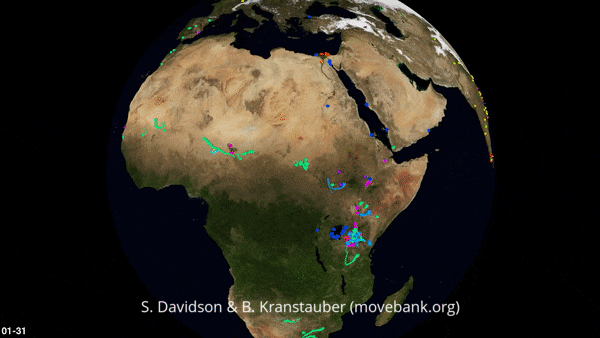computational neuroethology
05 Mar 2020 | by bartulem

For various animals alike, behavior is the interface between their inner cosmos and the outside world. This property allows sentient beings to make educated inferences about the minds of others. If skeptical, consider a hypothetical scenario where your exact mental life, with all its riches, was paired with a body that had experienced a total loss of muscle function. The lack of ability to communicate with your surroundings (through behavior) would render your thoughts and idiosyncrasies completely causally idle with respect to the outside world. Onlookers would still be able to speculate about the content of your character, but the empirical verification of such hypotheses would rest firmly in the hands of parapsychology. Unfortunately for some, e.g. those diagnosed with the locked-in syndrome, such a predicament - a mind stripped of its behavior - is a disconsolate reality.
Along with being a powerful tool for exerting influence on the environment, one of the most important traits of behavior is its tendency to be structured. Such remarks date back to ancient times, as numerous astute observers had noted that animal behavior was modular (i.e. it consisted of independent “elementary particles”), adaptive (i.e. “elementary particles” could be chained into more elaborate actions) and hierarchically organized (such that e.g. behaviors of different levels of complexity can run in parallel). However, it wasn’t until the early 20th century that science started to weigh in on these issues. Behavior aficionados and Nobel laureates like Karl von Frisch, Konrad Lorenz and Nikolaas Tinbergen steadily developed the field of ethology, the systematic study of animal behavior. Their interest in the common principles primarily governing innate behaviors yielded such useful concepts as imprinting (i.e. a type of phase-sensitive learning that is rapid and doesn’t require reinforcement), or the fixed action pattern (i.e. an instinctive sequence that is highly stereotyped and species-characteristic).

Importantly, ethologists relied heavily on expert observers manually scoring behaviors, so they conducted low throughput research that was likely marred by biases in human reasoning. In recent times, however, the landscape of behavior science has changed dramatically. If you wonder how dramatically, bear in mind it is now feasible, among other things, to track bird migration around the globe (see animation above). Additionally, the field has been greatly advanced by the development of more sophisticated methods for quantifying behavior, namely pose estimation tools that rely on machine vision or, more recently, deep neural networks to extract important behavioral features from videos of task-engaged or freely-moving animals (see animation below). This (r)evolution has enabled scientists, including yours truly, to explore and re-examine older ethological concepts and principles, such as the granularity of behavior, i.e. what are the elementary units of behavior and how do we combine them to form meaningful actions.

All of this is particularly interesting to neuroscientists, as we attempt to study the organ that generates all patterns of actions. Due to the previously outlined progress, it is of little surprise there is talk of computational neuroethology, a burgeoning field invested in making sense of large streams of data that offer a detailed quantitative account of animal behavior in conjunction with neural recordings and manipulations. The challenge ahead is to characterize the specifics of how the brain represents parameters related to natural behavior during unrestrained bodily motion, especially during social interaction. I would attempt to interest you with such topics in future posts.